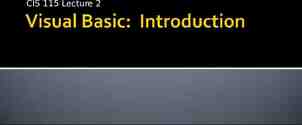CS-350 TERM PROJECT COMPUTER BUSES By : AJIT UMRANI
11 Slides50.00 KB
CS-350 TERM PROJECT COMPUTER BUSES By : AJIT UMRANI
What is a Bus ? A bus is a data communications connection between two or more communicating devices. What Does a Bus carry? 1. Electrical Power. 2. Control Signals. 3. Memory Address. 4. Data.
Different Buses Buses that work in sync with CPU and system clock are called the local buses or system buses. Buses that work asynchronously with the CPU are called the expansion buses. Ex. The memory bus is a local bus while the ISA bus is an expansion bus.
Bus Evolution Bus Released Bus Speed (MHz) ISA (8 Bit) 1982 4.77 ISA (8 Bit) 1984 8.33 MCA 1987 10 EISA 1988 8.33 VL-bus v1.0 1992 33 VL-bus v2.0 1994 50 PCI v1.0 1993 33 PCI v2.0 1994 66
ISA (8 Bit) Buses used in the first 4.77-MHz PCs introduced in 1982. 62 - Pin Bus. 8 Data Lines (allowing for 8 bits of data to be transferred at a time). 20 address lines (1 Mbytes of addressing ). ISA (16 Bit) Buses 8.33-MHz Bus introduced in 1984. 62 36 - Pin Bus. Eight more data lines (allowing for 16-bit data transfers). Four more address lines (allowing 16 Mbytes of addressing).
MCA Buses Micro Channel Architecture Buses The 32-bit bus. Introduced in 1987. It runs at 10 MHz. The theoretical maximum data transfer rate is 40 Mbytes/s. support for video and audio.
EISA Extended Industry Standard Architecture Developed by the "Gang of Nine" (nine non-IBM manufacturers of IBM-compatible PCs, led by Compaq) in 1988. 32 Bit Bus. Runs at 8.33 MHz. The theoretical maximum transfer speed is 33 Mbytes/s. A main advantage over MCA is that ISA boards can be plugged into the EISA bus.
VESA Video Electronics Standards Association Introduced in 1992 as a Standard for 32-Bit Local Buses. It runs at 33 MHz. It uses a 32 Bit Expansion slot. Has been replaced by the PCI buses.
PCI Buses Peripheral Component Interconnect Buses 32 or 64-bit wide bus implementations. It Runs at 33 MHz. Newer versions Run at 66 MHz. Maximum Theoretical transfer rate is 264 Mbytes/s. Designed to support ISA and EISA buses. It interfaces the expansion bus and the memory bus.
Relatively New Buses USB ( Universal Serial Bus ) : Allows 2 speeds 1.5 Mbit/s and 12 Mbit/s. Replacing the slow serial and parallel ports. FireWire Bus : Data Speeds as high as 400 Mbit/s. Replacing the High speed, High volume peripheral devices like network cards, DVD etc. AGP ( Accelerated Graphical Port ) : Has 32 Bit Data path and Run at Memory Bus Speed. Designed to provide fast access to video. Has replaced VESA & PCI Buses for Video output.
Bus Speed and Overall Performance Bus or Device Typical Values CPU 500 MHz, fastest ones are 1.7 GHz Memory Bus Speed 66 MHz, Some claim up speeds to 200MHz PCI Bus 33 MHz, Generally is Half the Memory Bus Speed ISA Bus 8.77 MHz
















